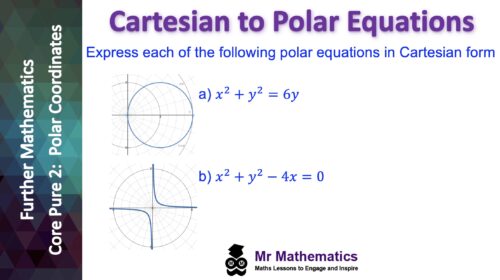How To Convert Cartesian To Polar Coordinates? Easy Steps

Converting Cartesian coordinates to polar coordinates is a fundamental concept in mathematics, particularly in trigonometry and geometry. The process involves transforming the coordinates from the Cartesian system, which represents points in a plane using x and y coordinates, to the polar system, where points are represented by their distance from a reference point (the origin) and the angle formed with the positive x-axis.
Introduction to Cartesian and Polar Coordinates
Before diving into the conversion process, it’s essential to understand the basics of both coordinate systems.
- Cartesian Coordinates: In this system, each point in a plane is determined by an ordered pair of numbers (x, y), which represent the horizontal and vertical distances from the origin, respectively.
- Polar Coordinates: This system represents points using (r, θ), where r is the radius or the distance from the origin to the point, and θ (theta) is the angle measured counterclockwise from the positive x-axis to the line connecting the origin to the point.
Steps to Convert Cartesian to Polar Coordinates
Converting from Cartesian (x, y) to polar coordinates (r, θ) involves the following steps:
Calculate the Radius ®: The distance of the point from the origin can be calculated using the formula derived from the Pythagorean theorem: [ r = \sqrt{x^2 + y^2} ] This formula gives us the length of the line segment connecting the point (x, y) to the origin (0, 0), which is the radius in polar coordinates.
Calculate the Angle (θ): The angle θ can be found using the arctan function, considering the quadrant in which the point lies: [ \theta = \text{atan2}(y, x) ] The atan2 function is a two-argument form of the arctangent function that takes into account the signs of both y and x to determine the correct quadrant for the angle θ.
Consider the Quadrants: It’s crucial to consider the quadrant in which the point (x, y) lies because the angle θ should be measured counterclockwise from the positive x-axis. The atan2 function automatically handles this, but if you’re calculating θ manually, you need to adjust based on the signs of x and y:
- If x > 0 and y ≥ 0, θ is in the first quadrant.
- If x < 0 and y ≥ 0, θ is in the second quadrant.
- If x < 0 and y < 0, θ is in the third quadrant.
- If x > 0 and y < 0, θ is in the fourth quadrant.
Example Conversion
Let’s convert the Cartesian point (3, 4) to polar coordinates.
Calculate r: [ r = \sqrt{3^2 + 4^2} = \sqrt{9 + 16} = \sqrt{25} = 5 ]
Calculate θ: Using the atan2 function or a calculator in radian mode: [ \theta = \text{atan2}(4, 3) ] [ \theta \approx 0.9273 \text{ radians} ] Or, to find the angle in degrees: [ \theta \approx 53.13^\circ ]
So, the polar coordinates of the point (3, 4) are approximately (5, 0.9273 radians) or (5, 53.13 degrees).
Conclusion
Converting Cartesian coordinates to polar coordinates is a straightforward process once you understand the formulas and considerations involved. By calculating the radius and angle using the given formulas and paying attention to the quadrant, you can accurately convert points from the Cartesian system to the polar system. This conversion is useful in various applications, including navigation, physics, engineering, and computer science, where representing positions or vectors in polar form can simplify calculations or provide more intuitive insights.
What is the primary difference between Cartesian and polar coordinate systems?
+The primary difference lies in how points are represented. Cartesian coordinates use x and y values to represent a point's horizontal and vertical distances from the origin, while polar coordinates use the radius (distance from the origin) and the angle from the positive x-axis to represent a point.
How do you determine the angle θ in polar coordinates?
+The angle θ can be determined using the atan2(y, x) function, which takes into account the signs of both y and x to correctly place the angle in one of the four quadrants.
What mathematical concept is used to calculate the radius r in polar coordinates?
+The radius r is calculated using the Pythagorean theorem, r = \sqrt{x^2 + y^2}, which gives the distance of the point from the origin.
With a solid understanding of the conversion process and the unique characteristics of each coordinate system, you can apply these principles to a wide range of problems and applications. Remember, practice converting between these systems to deepen your understanding and proficiency.



